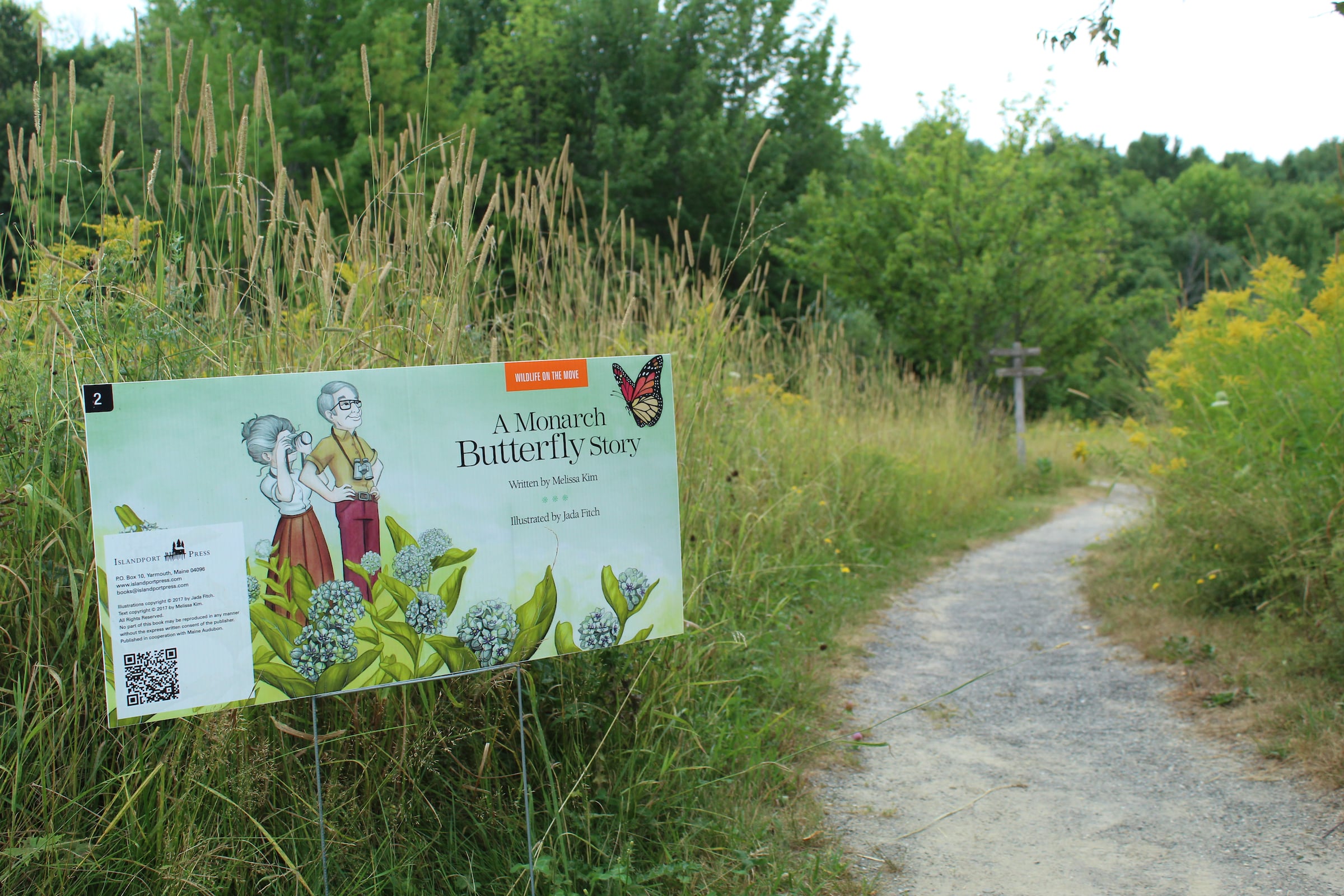Report on Advocacy for the Endangered Species Act and Alignment with Sustainable Development Goals
Executive Summary
This report details the recent advocacy efforts undertaken by Maine Audubon in Washington D.C. to support the Endangered Species Act (ESA). Staff delivered a petition, representing a significant public mandate, to Maine’s Congressional delegation. These actions directly contribute to the United Nations Sustainable Development Goals (SDGs), particularly SDG 15 (Life on Land), SDG 14 (Life Below Water), and SDG 16 (Peace, Justice and Strong Institutions) by promoting biodiversity protection through robust legal frameworks and civic engagement.
Civic Engagement and Institutional Strengthening (SDG 16 & 17)
In an effort to ensure responsive and participatory decision-making (SDG 16.7), Maine Audubon engaged directly with key legislative offices. This initiative highlights a partnership between civil society and government (SDG 17) to uphold environmental law.
- A petition with over 1,800 signatures from Maine residents was hand-delivered, demonstrating widespread public support for the ESA.
- Meetings were conducted with staff from the offices of Maine’s complete Congressional delegation:
- Senator Susan Collins
- Senator Angus King
- Representative Jared Golden
- Representative Chellie Pingree
Biodiversity Conservation and Ecosystem Protection (SDG 14 & 15)
The Endangered Species Act is a cornerstone of national policy for achieving biodiversity targets outlined in SDG 14 and SDG 15. Its historical effectiveness underscores its importance in halting biodiversity loss and protecting threatened species (SDG 15.5).
- Preventing Extinction: The ESA has been instrumental in preventing the extinction of 99% of all species listed under its protection.
- Species Recovery: The Act has facilitated the successful recovery of numerous species, including the Bald Eagle and the American Alligator.
- Local Ecosystem Impact: In Maine, the ESA is critical for the protection of species vital to coastal and aquatic ecosystems, such as:
- Piping Plovers, contributing to the health of coastal habitats (SDG 14.2, SDG 15.1).
- Atlantic Salmon, supporting the integrity of freshwater and marine ecosystems (SDG 14.2, SDG 15.1).
Legislative Context and Threats to Conservation Goals
Current challenges threaten the efficacy of the ESA and, consequently, progress toward related SDG targets. These threats require vigilant monitoring and legislative opposition.
- Proposed administrative actions to reduce funding and staffing for ESA implementation.
- Various legislative proposals in Congress designed to undermine the Act’s effectiveness or remove protections for specific species.
Congressional Support and Forward Outlook
The advocacy visit confirmed that Maine’s federal representatives recognize the importance of the ESA. Their recent actions demonstrate a commitment to maintaining the strong institutions required to protect life on land and below water (SDG 14, 15, 16).
- Senator Collins advanced a Senate Interior Appropriations bill that provides sufficient funding for the ESA and is devoid of damaging riders.
- Representatives Golden and Pingree voted against a House proposal to exempt Department of Defense lands from ESA compliance.
The visit served as a critical reminder to federal representatives that their constituents strongly support the Endangered Species Act, a vital legal instrument for achieving national and global sustainability objectives.
Analysis of Sustainable Development Goals in the Article
1. Which SDGs are addressed or connected to the issues highlighted in the article?
The article highlights issues that are directly and indirectly connected to several Sustainable Development Goals (SDGs). The primary focus on wildlife protection, legislative action, and civic engagement links the article’s content to the following SDGs:
- SDG 15: Life on Land: This is the most prominent SDG in the article. The entire narrative revolves around the protection of the Endangered Species Act (ESA), which is a key mechanism for halting biodiversity loss, protecting threatened species, and preventing extinctions on land and in freshwater ecosystems. The article explicitly mentions the protection of species like Piping Plovers and the recovery of the Bald Eagle.
- SDG 14: Life Below Water: The article connects to this goal through its mention of protecting Atlantic Salmon. As an anadromous species, Atlantic Salmon depend on both freshwater rivers and marine environments to complete their life cycle. Therefore, efforts to protect them under the ESA contribute to the conservation and sustainable use of oceans and marine resources.
- SDG 16: Peace, Justice and Strong Institutions: This goal is addressed through the article’s description of civic action and the functioning of governmental institutions. The act of Maine Audubon delivering a petition signed by over 1,800 citizens to their congressional delegation is a clear example of public participation in decision-making. Furthermore, the discussion of legislative actions, such as the Senate Interior Appropriations bill and votes on ESA compliance, relates to the development of effective, accountable, and transparent institutions for environmental governance.
2. What specific targets under those SDGs can be identified based on the article’s content?
Based on the issues discussed, the following specific SDG targets can be identified:
-
Under SDG 15 (Life on Land):
- Target 15.5: “Take urgent and significant action to reduce the degradation of natural habitats, halt the loss of biodiversity and, by 2020, protect and prevent the extinction of threatened species.” The article’s central theme is the defense of the Endangered Species Act, a law created specifically to achieve this target. It notes the ESA’s success in preventing the extinction of 99% of listed species and mentions ongoing work to protect threatened species like Piping Plovers and Atlantic Salmon.
- Target 15.9: “By 2020, integrate ecosystem and biodiversity values into national and local planning, development processes, poverty reduction strategies and accounts.” The Endangered Species Act itself represents the integration of biodiversity values into US national planning and law. The advocacy efforts described in the article—to ensure the ESA is adequately funded and protected from damaging riders—are actions aimed at upholding this integration.
-
Under SDG 14 (Life Below Water):
- Target 14.2: “By 2020, sustainably manage and protect marine and coastal ecosystems to avoid significant adverse impacts… and take action for their restoration.” The protection of Atlantic Salmon, a species listed in the article, is directly linked to this target. Conserving this species requires protecting the health and resilience of the marine and coastal ecosystems they inhabit during their ocean phase.
-
Under SDG 16 (Peace, Justice and Strong Institutions):
- Target 16.7: “Ensure responsive, inclusive, participatory and representative decision-making at all levels.” The article provides a direct example of this target in action. Maine Audubon, representing its members and supporters, engaged in a participatory process by collecting over 1,800 signatures on a petition and delivering it to congressional staff to influence the decision-making process regarding the ESA.
- Target 16.6: “Develop effective, accountable and transparent institutions at all levels.” The article discusses the effectiveness of the ESA as a law (“one of the nation’s most popular and effective wildlife-protection laws”) and the institutional actions surrounding it, such as Senator Collins shepherding a bill for “adequate funding” and representatives voting against exemptions. This highlights the ongoing effort to maintain the effectiveness and accountability of the institutions responsible for implementing environmental law.
3. Are there any indicators mentioned or implied in the article that can be used to measure progress towards the identified targets?
The article mentions or implies several indicators that can be used to measure progress:
- For Target 15.5 (Preventing Extinction): The article provides a direct quantitative indicator of the ESA’s success: the fact that it has “succeeded in keeping 99% of all listed species from extinction.” The status of individual species like the recovered Bald Eagle and the protected Piping Plovers also serves as a qualitative indicator of progress. This aligns with the official indicator 15.5.1 (Red List Index).
- For Target 16.7 (Participatory Decision-Making): A clear quantitative indicator is mentioned: the “petition signed by more than 1,800 Mainers.” This number measures the level of public participation and engagement on the specific issue of protecting the ESA.
- For Target 15.9 & 16.6 (Integration into National Planning & Effective Institutions): The article implies indicators related to policy and finance. The successful passage of a “Senate Interior Appropriations bill that provides adequate funding for the ESA” is a financial indicator of institutional support. Similarly, the defeat of proposals that would “undermine the effectiveness of the Act,” such as the exemption for Department of Defense lands, is an indicator of the law’s institutional strength and its integration into national policy.
4. Summary Table of SDGs, Targets, and Indicators
| SDGs | Targets | Indicators Identified in the Article |
|---|---|---|
| SDG 15: Life on Land | Target 15.5: Protect and prevent the extinction of threatened species. | The success rate of the ESA in preventing the extinction of 99% of listed species; the conservation status of specific species (Piping Plovers, Bald Eagle). |
| SDG 15: Life on Land | Target 15.9: Integrate ecosystem and biodiversity values into national planning. | The existence and continued defense of the Endangered Species Act as a national law. |
| SDG 14: Life Below Water | Target 14.2: Sustainably manage and protect marine and coastal ecosystems. | Efforts to protect Atlantic Salmon, a species dependent on healthy marine and coastal ecosystems. |
| SDG 16: Peace, Justice and Strong Institutions | Target 16.7: Ensure responsive, inclusive, participatory and representative decision-making. | A petition signed by over 1,800 citizens delivered to congressional representatives. |
| SDG 16: Peace, Justice and Strong Institutions | Target 16.6: Develop effective, accountable and transparent institutions. | Passage of appropriations bills providing adequate funding for the ESA; legislative votes against weakening the Act. |
Source: maineaudubon.org







